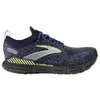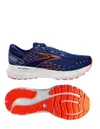I tried the 4-7-8 breathing technique every day for 2 weeks — here’s what happened to my mind and body
And breathe...

When life gets a bit much, it’s easy to forget something as simple as breathing. I’m not talking about the automatic kind of breathing we do all the time to keep us alive. I mean the deliberate, deep breaths we can take to bring our minds and bodies back to baseline. It’s something I only realize when I allow stressful times to get the better of me.
I recently discovered something called the 4-7-8 breathing technique. Unlike the meditation apps and the many calming yoga routines I’ve tried on my best yoga mat (and not kept up with), this felt like a tool I could use anywhere. But, it turns out that learning to breathe intentionally was harder than I thought.
To help me understand the method better, I spoke with a meditation coach to help me grasp the 4-7-8 breathing hack. Here’s how I got on.

Thibo David is a renowned performance coach, former Special Forces soldier, and meditation coach.
What Is the 4-7-8 breathing technique?
David describes the 4-7-8 breathing technique as a practice that works by shifting the body from 'fight or flight' mode into a calm, 'rest and digest' state.
It involves inhaling through your nose for 4 seconds, holding your breath for 7 seconds, and exhaling slowly through your mouth for 8 seconds. If you just gave it a quick go you are probably thinking simple stuff, right?
However, according to Thibo, this specific rhythm can have a powerful impact on the body. “This technique stimulates your vagus nerve, lowers your heart rate, reduces tension, and helps to regulate blood pressure,” David told me.
“It’s like hitting a reset button for the nervous system, breaking the cycle of chronic stress and allowing you to regain control. It’s a powerful way to center yourself and stay in control, even when under pressure.”
Sign up to get the BEST of Tom's Guide direct to your inbox.
Get instant access to breaking news, the hottest reviews, great deals and helpful tips.
Feeling curious about all this, I decided to practice the 4-7-8 breathing technique every day for two weeks to see if it really helped me feel calmer day to day.
It didn't come naturally
The first time I tried the 4-7-8 technique was at my desk, in the middle of the work day when I tend to feel a little tenser than normal and my mind is very busy.
Sadly, I didn't feel instant relief. In fact, the technique felt very unnatural. Drawing in breath and trying to hold it before exhaling was a challenge and I felt like it was more of a disruption to my normal breathing pattern (whatever that looks like).
However, unlike an intense workout that can go on for as long as 45 minutes, David recommends spending as little as five minutes a day on the 4-7-8 breathing technique.
“Set a simple intention each time, like reducing stress or staying focused on your goals, so it feels purposeful,” David explains. “I also suggest linking it to something you already do every day, like your morning coffee.”

It became a tool I used in various situations
Once I followed David’s advice and made the 4-7-8 technique a daily habit, I started noticing the benefits. My shoulders would relax, my mind felt clearer, and I eased into the practice.
Soon, I began using it beyond my morning or evening routine. Whenever I felt overwhelmed by my to-do list, frustrated over something small, or swallowed up by the crowds and chaos of city life, I’d stop, inhale for four, hold for seven, and exhale for eight.
Thankfully, it’s subtle enough to do anywhere, without drawing attention. I’ve used it everywhere, from the comfort of my bed to a packed train carriage during rush hour.
I used it as a recovery tool
David, who is a former Special Forces commando turned trainer, emphasized how breathing exercises were essential for recovery and endurance during his military career.
“It can help to lower blood pressure, improve heart rate variability, and enhance lung capacity and circulation," he explained.
“Controlled breathing increases oxygen flow to the muscles, reducing fatigue and allowing for better physical performance. That’s why top athletes incorporate these techniques, it’s not just about mental strength, it’s a physical advantage too."
I’m no top athlete, but I do regularly lace up my best running shoes to hit the pavements or the gym and I do often face the aches and pains of DOMS (delayed-onset muscle soreness).
While I can’t specifically measure how the 4-7-8 technique impacted my recovery after a tough session, I’m a firm believer in prioritizing rest and recovery in between workouts. It’s key for better exercise performance but I also love seeing a higher body battery score on my best Garmin watch.
Should you try the 4-7-8 breathing technique?
After two weeks of daily practice, I’ve found the 4-7-8 breathing technique to be a simple, accessible tool for managing stress and staying grounded. David’s advice to approach the technique with patience and consistency made all the difference.
Whether you’re dealing with anxious thoughts, struggling to focus, or just need a moment of calm, this technique is a small yet effective solution.
More from Tom's Guide
- Forget the gym — you only need 6 moves to build full-body muscle and boost your metabolism
- You don't need weights to build full-body muscle, just 30 minutes and this equipment-free workout
- I did 70 weighted push-ups every day for a week — here’s what happened to my upper body

Jessica has been a fitness writer at Tom’s Guide since 2023, bringing three years of experience writing about health, fitness, and the great outdoors. Her passion for exercise began during her childhood, where she spent weekends hiking and competing in local athletics club events. After earning a master’s degree in journalism from Cardiff University, Jessica found the perfect way to combine her love of storytelling and fitness into a career.
Jessica is passionate about testing fitness gear and tech, using her reviews to help readers make informed buying decisions. She ran her first marathon in April 2024, finishing it in 3 hours and 48 minutes. Through her training, she’s developed a deep understanding of what it takes to grow as a runner, from effective workouts and recovery techniques to selecting the right gear for every challenge.
When she’s not at her desk, Jessica enjoys spending time in the kitchen crafting new recipes, braving cold water swims and hiking.









